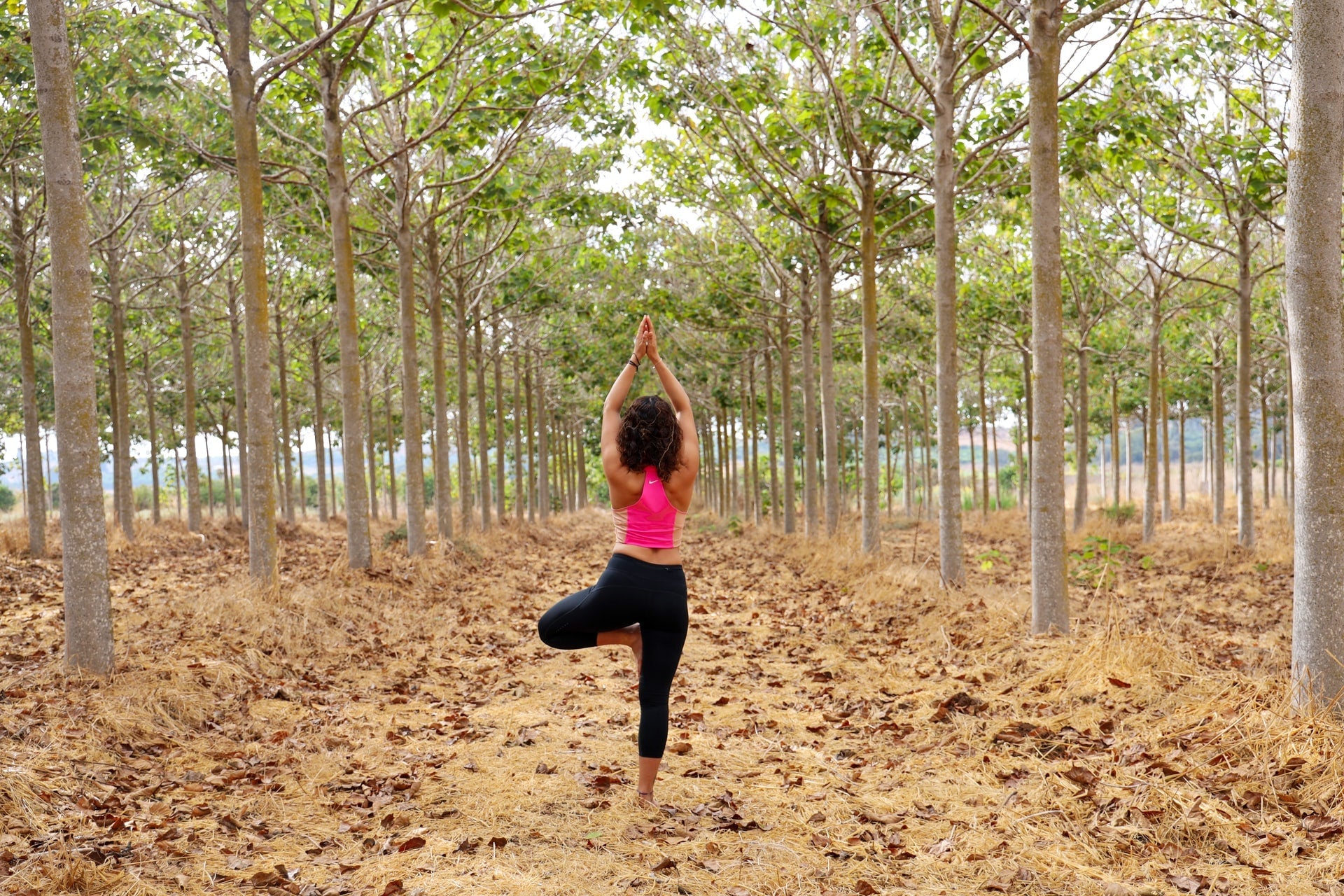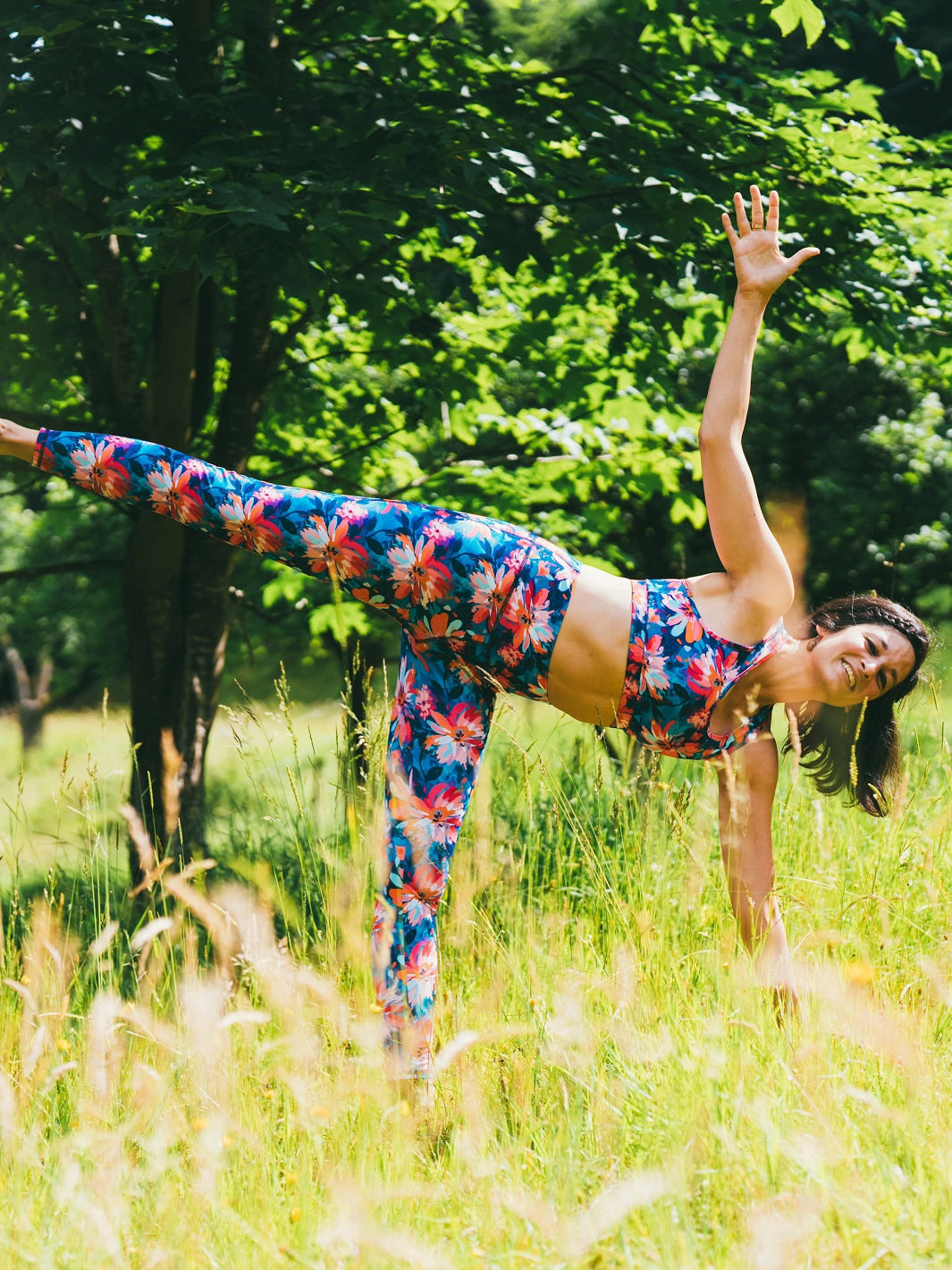This article is additional information regarding the personal development exercise proposed for the month of November (Rooting - I anchor myself firmly in the present moment ) in our positive affirmations card game .
What story is hidden behind this posture which reproduces the graceful and stable appearance of a tree? If you have a weakness for princess stories and allegories, the mythology behind the tree pose is likely to interest you.
But before diving into this Indian epic collected in the Ramayana, one of the fundamental texts of Hinduism, a few explanations.
From its Sanskrit name “Vrikshasana”, the posture of the tree is observed for the first time in a stone engraving dating from the 7th century in Mahabalipuram on the east coast of India.

But it has certainly existed since at least the time of the Buddha, who himself experienced enlightenment in the shade of a tree.
Starting from mountain pose (Tadasana), the foot of the right leg is placed against the left leg, above or below the knee (avoid at all costs exerting lateral pressure on your knees, they don't like it at all).
For those who wish, one can raise their arms above their heads and join their hands in prayer.

In your practice of the tree pose, which, once the balance is well mastered, becomes a very pleasant posture, allow yourself to take root for a moment, to feel your strength and your calm, letting the energy rise vital from head to toe. 5 to 10 minutes to get started is enough.
The tree pose will effectively bring you back to the here and now when life mishandles you and makes you lose control.
The more regularly we practice this yoga posture, the more we feel its benefits. Motivated to make yoga a daily practice? Here are a few tips...

And now, once upon a time...
It all started the day the demon king named Ravana kidnapped princess Sita and took her with him to his palace in Lanka. He firmly believed that she was going to fall in love with him.
After all, that's what happened to all the women around him. Ravana was magnificent (once you got used to his 10 faces), powerful and fabulously rich.
Every day he offered Sita a new offering but she, resolute, maintained her refusal: “I am your prisoner, not your guest,” she said. “I will never be yours. Remember that I am Rama's wife and he will find me. »
Ravana, patient, replied: “I will give you one year to accept me. After which, I will eat you. »
Brrrrh...strange definition of love.

In the palace grounds grew “Ashoka” trees, which means “without sorrow”. In Indian folklore, this variety of tree is the symbol of love but also the source of powerful medicinal compounds.
Sita found refuge under their shade but Ravana's guard, although forbidden to harm her physically, continued to torment her. “Forget Rama, he will never come for you. “, said the guards.

Every thought, every breath, every heartbeat was directed towards him. She imagined sending her love for Rama through the trees.
Trees are incredibly resilient creatures. The Ashokas, hearing Sita’s prayer, silently said to her: “Be still. This captivity is not for eternity. Be calm and think of Rama. »
As if he had heard it, Rama asked his monkey and aide-de-camp Hanuman to go in search of Sita and to give her his ring to make her understand that he would come and get her.
One fine day, Sita saw Hanuman coming and giving her the ring. Although still captive, this offering only increased his feeling of belonging to Rama.
The end.

In Indian sacred literature, trees are the symbol of the universe and the link between men and God. Sita in her misfortune finds refuge and peace among the Ashoka trees. His body is a prisoner but his mind is free.
And you ? When times are troubled, do you find comfort in nature? Because after all, it takes a lot to uproot a tree...
Discover the yoga exercise proposed for the month of December: These yoga postures that open the heart !
Discover here our eco-responsible yoga outfits made in France from recycled materials, perfectly suited to practicing all types of yoga!
To find out more about all the types of yoga and find out which one is right for you, click here:
- Vinyasa Yoga
- Nidra Yoga
- Iyengar Yoga
- Yin Yoga
- Ashtanga Yoga
- Dervish Yoga
- Kundalini Yoga
- Ananda Yoga
- Kripalu Yoga
- Hatha Yoga
- Bikram Yoga
- Jivamukti Yoga
- Aerial Yoga
And so you don't miss any Géopélie news, subscribe to our newsletter here at the bottom of the page 👇 or here , we only send a maximum of two per month!
Photo credits :
- Mor Shani @morshanik
- Katee Lue @kateelue
- Christopher Alvarenga
- Conscious Design
Sources:
- English blog Art of Living
- English-speaking blog Yoga International
- Bahiranga English blog





Leave a comment